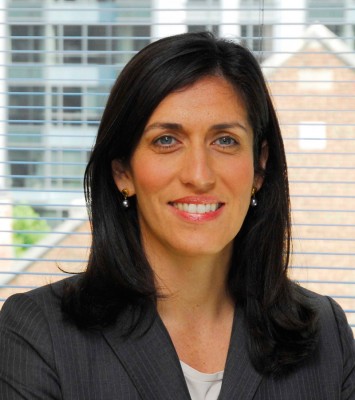President Barack Obama and his challenger Mitt Romney have both thrown their support behind charter schools, publicly funded schools that operate outside of district rules. Obama gave states points in his Race to the Top initiative, in which states promised to undergo education reforms in exchange for federal money, for raising charter caps. Romney’s entire education platform hinges heavily on school choice, including charters, vouchers and online schools.
At the Democratic National Convention, The Hechinger Report sat down with Nina Rees, President and CEO of the National Alliance for Public Charter Schools, to find out what she thinks of the candidates.
Q. Obama and Romney seem to have common ground on education, but one of the areas that they do differ is how far to take school choice. Do you see any differences in the way that they talk about school choice and charters?
A. If you look at Romney’s past statements about the Obama administration and Obama himself, the one area where he thinks the president has done good work has been in the area of education initiatives like Race to the Top. The key difference is school choice. He’s taken a step further by pushing states to be more aggressive in making choices available to their students, pushing the envelope on inter-district choice, which again hasn’t been mentioned in the Obama platform. Romney’s notion of federal involvement includes giving states more freedom from rules and regulations in exchange for greater information for families to make educated choices and access to those options, which is different from where the president is. His vision right now does include carrots and sticks and continues down the path of No Child Left Behind’s accountability mission, which is that there are going to be consequences if certain goals are not met.
Q. Which vision do you prefer?
A. The National Alliance is a nonpartisan group. We love the fact that charter schools are bipartisan. I think that it’s important to continue in that spirit. And both candidates, quite frankly, so far have been strong on the issue, so I can’t chose.
Leveraging that support in a meaningful way [is key]. You can be supportive but how much money are you going to put on the table? Or how much are you going to push on ESEA to make sure that the current funding streams are reaching the schools?
Q. Regardless of who is elected, what are some things you would like to see happen at the federal level in terms of charter school policy?
A. Certainly funding is a big issue. Making sure that charter schools continue to get access to startup funding is going to continue to be important. The other issue is making sure that the existing funding streams targeted at public education also reach charter schools, since charter schools are public schools. In a lot of cases, unfortunately they’re not getting their equitable share of funding from Title 1 [federal money given to schools with a certain amount of low-income students], from the Individuals with Disabilities Education Act. Beyond just increasing funding for the charter school programs, I think it’s also important to look at the laws in place and the regulations in place to clarify a little bit more the fact that charter schools can also apply for [federal competitive grants].
Broadly speaking any and all efforts around weighted student funding, making sure dollars are following children or encouraging states to make sure dollars follow children [is important]. Encouraging inter-district choice or statewide open enrollment also benefit charter schools. So making sure that those policies are promoted at the federal level would be important.
This interview has been edited for length and clarity.




